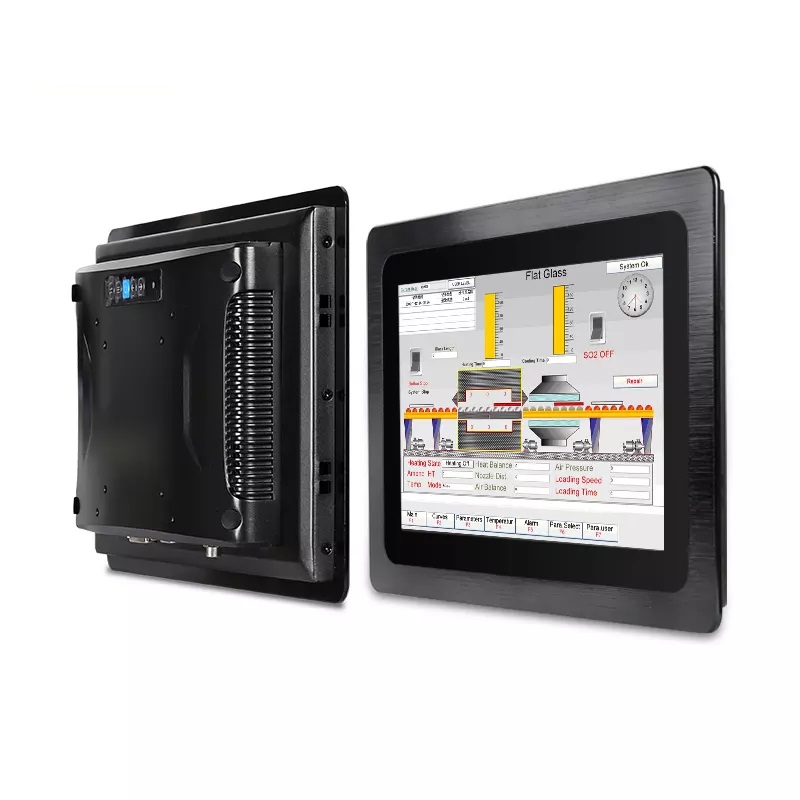Industrial liquid crystal display screens (LCDs) have become an integral part of various industrial applications and are widely used in automation control systems, medical equipment, aerospace, transportation systems, and industrial surveillance. This article will look in detail at the characteristics of industrial LCD screens and why they are so popular in industrial settings.
First: high reliability and durability
One of the primary features of industrial LCD screens is their high reliability and durability. In industrial environments, equipment often needs to operate for long periods of time and is exposed to harsh conditions such as temperature changes, vibration, humidity and dust. Industrial LCD designs incorporate special materials and engineering that allow them to withstand these environmental challenges. This means that industrial LCD screens can operate stably for a long time, reducing the need for maintenance and replacement, and reducing life cycle costs.
Second: wide temperature range and protective performance
Industrial LCDs are typically designed to operate over a wide range of temperatures, from freezing cold to scorching heat. This makes them suitable for industrial locations in various climate conditions, such as outdoor environments or factory floors. In addition, industrial LCDs also have protective properties that can withstand external factors such as liquid splash, dust and vibration, ensuring that they can still provide reliable display in harsh environments.
Third: High brightness and visibility
In industrial scenarios, high-brightness displays are usually required to cope with strong sunlight or long-distance observation. Industrial LCD displays are usually equipped with high-brightness backlights to ensure clear visibility in bright environments. This makes them ideal for applications such as outdoor signage, traffic control and remote surveillance.
Fourth: Customizability and Versatility
Industrial LCD displays often have customizable features to meet the needs of different applications. Manufacturers can customize parameters such as screen size, resolution, brightness and interface according to customer requirements. In addition, they can support multiple input signals such as VGA, HDMI, DVI and DisplayPort to adapt to different devices and systems. This flexibility makes industrial LCDs ideal for a variety of industrial applications.
Fifth: Low power consumption and energy saving
Industrial LCD displays usually use low-power technology to reduce energy consumption and extend equipment life. Compared with traditional display technologies, LCD screens are often able to operate in low-power modes to save power. This is particularly beneficial for industrial equipment and battery-operated equipment that need to run for long periods of time.
Sixth: High Resolution and Image Quality
Industrial LCD displays feature high resolution and excellent image quality, which are crucial for many industrial applications. High-resolution screens can display more information and more detailed images, increasing operator efficiency. In addition, industrial LCDs usually support wide viewing angles, ensuring that image quality can still be maintained when viewed by multiple people or viewed from different angles.
Seventh: Touch screen and interactivity
Many industrial LCD displays also have touch screen capabilities, making them more interactive. This is useful for control and monitoring applications, where operators can touch directly on the screen without the need for external input devices. Touch screen technology can improve user experience and ease of operation.
Eighth: Application areas
Industrial LCD displays are widely used in the following fields:
- Industrial automation and control systems: used to monitor and control factory equipment and processes.
- Medical equipment: used in applications such as medical imaging, patient monitoring, and surgical navigation.
- Aerospace: used for flight control, navigation and flight information display.
- Traffic system: used for traffic signals, highway information display and intelligent traffic management.
- Military applications: used in military equipment, control centers and communication equipment.
- Ship and marine fields: used for navigation, radar systems and ship surveillance.
- Outdoor advertising and signs: used for outdoor billboards, digital billboards and information displays.
- Energy monitoring: used for monitoring and control of power stations, water treatment plants and energy production facilities.
To summarize, industrial LCD displays offer high reliability, durability, visibility, versatility, and customizability, making them ideal for industrial environments. It is widely used in various industrial fields and provides critical support for improving efficiency, safety and reliability. As technology continues to advance, the performance and application areas of industrial LCD screens will continue to expand.

